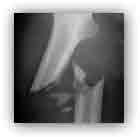News and Insights for
your best life. Online since 1998
- Home Health
- Breaking news
- In caso di...
- Per saperne di
più... - Medicina occidentale
- Medicine complementari
- Medicina cinese
e agopuntura - Omeopatia
- Fitoterapia

Researchers from ETH Zurich have successfully demonstrated, for the first time in vivo, how bone tissue responds to local mechanical stimuli that control bone formation. The study reveals how important it is to stimulate the bones through movement.

It is common knowledge that mechanical stress on bones, arising through activities such as jogging or walking, encourages bone formation. However, it has remained unclear how exactly the bone-forming cells in the bone marrow respond to mechanical stimuli – or how their bone-resorbing counterparts respond in the absence of strain.
Bone is able to react to changing mechanical demands by adapting its internal microstructure through bone forming and resorbing cells.
This process is called bone modeling and remodeling: bone substance is formed where it is needed and resorbed where it is not. A well-balanced interplay between osteoblasts, which are responsible for bone formation, and osteoclasts, which resorb and break down bones, is important for a healthy organism. Both the over- and underproduction of these two kinds of cells lead to abnormal changes in the bone structure.
It is evident that changes in mechanical demands at the organ level must be interpreted at the tissue level where bone (re)modeling takes place.
Although assumed for a long time, the relationship between the locations of bone formation and resorption and the local mechanical environment is still under debate. The lack of suitable imaging modalities for measuring bone formation and resorption in vivo has made it difficult to assess the mechanoregulation of bone three-dimensionally by experiment.
Using in vivo micro-computed tomography and high resolution finite element analysis in living mice, we show that bone formation most likely occurs at sites of high local mechanical strain (p<0.0001) and resorption at sites of low local mechanical strain (p<0.0001).
Furthermore, the probability of bone resorption decreases exponentially with increasing mechanical stimulus (R2 = 0.99) whereas the probability of bone formation follows an exponential growth function to a maximum value (R2 = 0.99).
Moreover, resorption is more strictly controlled than formation in loaded animals, and ovariectomy increases the amount of non-targeted resorption.
Our experimental assessment of mechanoregulation at the tissue level does not show any evidence of a lazy zone and suggests that around 80% of all (re)modeling can be linked to the mechanical micro-environment. These findings disclose how mechanical stimuli at the tissue level contribute to the regulation of bone adaptation at the organ level.
For more information
Schulte FA, Ruffoni D, Lambers FM, Christen D, Webster DJ, et al. (2013) Local Mechanical Stimuli Regulate Bone Formation and Resorption in Mice at the Tissue Level.
PLoS ONE 8(4): e62172. doi:10.1371/journal.pone.0062172
http://www.plosone.org/article/info%3Adoi%2F10.1371%2Fjournal.pone.0062172
MDN
del Dott. Turetta
Quali sono i problemi o le disfunzioni che possono giovarsi di un intervento omeopatico d'urgenza e, di conseguenza, come dovrebbe essere un ideale armadietto medicinale omeopatico casalingo.- Home -
- Health -
- Depressione -
- Sexuality
- Environment -
- Food -
- Musica -
- Capirsi -
- Grafologia -
- Ridere
Copyright © 1998/2018 www.mybestlife.com tutti i diritti sono riservati eccetto quelli già di altri proprietari.
.In caso di
Pubblicità
Per saperne di più su
Pubblicità
Pubblicità
Pubblicità
Pubblicità


